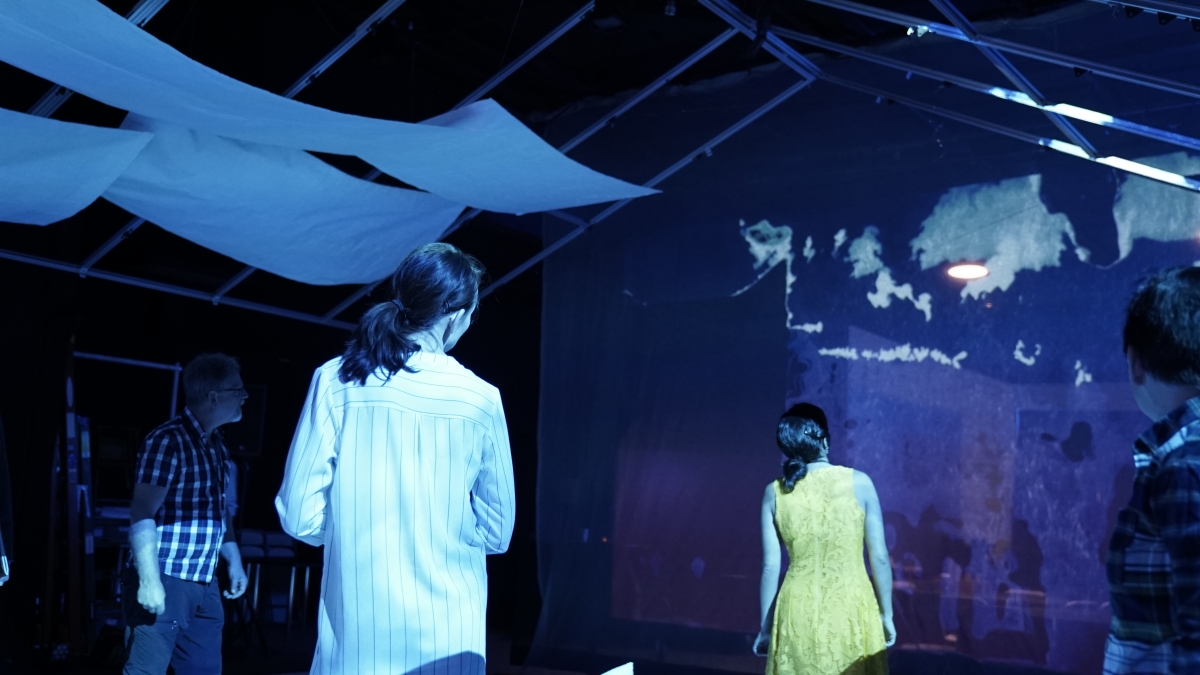ASU Synthesis Center featured at interdisciplinary symposium

Participants immerse themselves in the enchanted environments of iStage, featuring projects such as SERRA and Experiential Models of the Atmospheres. Courtesy photo.
Faculty from the School of Arts, Media and Engineering, a transdisciplinary unit at Arizona State University formed between the Herberger Institute for Design and the Arts and the Ira A. Fulton Schools of Engineering, will present work from the school’s Synthesis Center at the Living Architecture Systems Group Symposium in Toronto.
The Living Architecture Systems Group is an interdisciplinary partnership of academics, artists, designers and industry partners dedicated to researching and developing built environments with qualities that come close to life — environments that can move, respond and learn, with metabolisms that can exchange and renew their environments, and which are adaptive and empathic toward their inhabitants. The group works on developing innovative technologies, new critical aesthetics and integrative design working methods in an effort to provide a new generation of designers with critical next-generation skills and critical perspectives for working with complex environments.
Sha Xin Wei, director of the School of Arts, Media and Engineering, and Brandon Mechtley, assistant research professor in the school, were invited to present the work being conducted at Synthesis, which includes creating rich responsive environments. Researchers at Synthesis explore how these environments can be used for shelter, sociality or play and how people experience computer-mediated environments that now include not only virtual reality games and experimental theater, but also classrooms, airports and public spaces.
“Synthesis was invited by the group to present our continuous state-based methods for composing rich behavior of complex media environments to support improvisatory activity,” Sha Xin Wei said.
The symposium, held March 1–3 in Toronto, features researchers and artists from ETH Zurich, Central Saint Martins London, the Royal Danish Academy of Fine Arts, University of Michigan, the Massachusetts Institute of Technology, the School of Architecture at Waterloo, the Ontario College of Art and Design University and University of California, Berkeley, as well as design and architecture firms. This international, multiyear partnership is sponsored by the Canadian Social Sciences and Humanities Research Council.
More Science and technology

ASU and Deca Technologies selected to lead $100M SHIELD USA project to strengthen U.S. semiconductor packaging capabilities
The National Institute of Standards and Technology — part of the U.S. Department of Commerce — announced today that it plans to…

From food crops to cancer clinics: Lessons in extermination resistance
Just as crop-devouring insects evolve to resist pesticides, cancer cells can increase their lethality by developing resistance to…

ASU professor wins NIH Director’s New Innovator Award for research linking gene function to brain structure
Life experiences alter us in many ways, including how we act and our mental and physical health. What we go through can even…